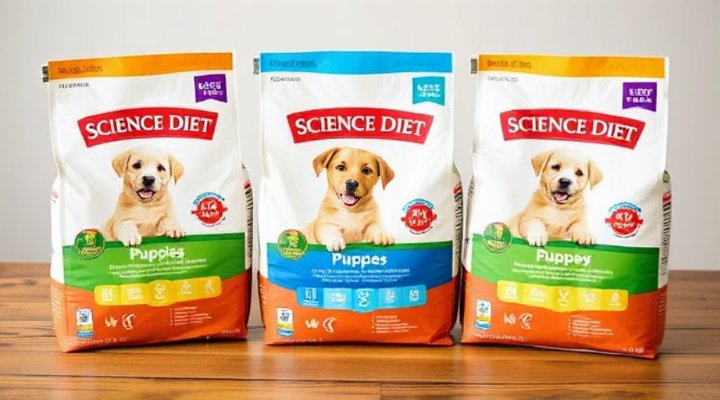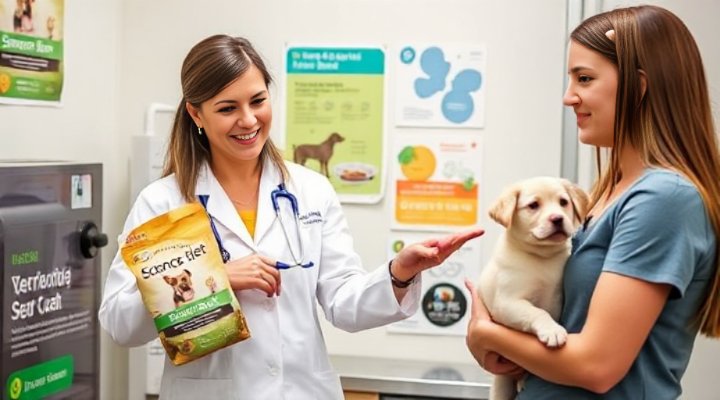When it comes to raising a healthy puppy, nutrition plays a pivotal role. Science diet dog food for puppies is specially formulated to meet the unique nutritional needs of growing dogs. But with so many options available, how do you choose the best one for your furry friend? In this comprehensive guide, we’ll walk you through everything you need to know about selecting the perfect science diet for your puppy’s health and happiness.

Understanding Your Puppy’s Nutritional Needs
Puppies grow at an astonishing rate, which means their dietary requirements are significantly different from adult dogs. Science diet dog food for puppies is designed to provide the right balance of proteins, fats, carbohydrates, vitamins, and minerals to support this rapid growth. For instance, puppies need about twice as many calories per pound of body weight as adult dogs.
Protein is particularly crucial for muscle development, while DHA (an omega-3 fatty acid) supports brain and eye development. Calcium and phosphorus must be carefully balanced for proper bone growth. This is why generic dog food or adult formulas won’t cut it for your growing pup.
The Importance of Age-Specific Formulas
Science diet offers different formulations for various life stages. You’ll find specific products for:
- Newborn to weaning (usually fed by breeders)
- Weaning to 6 months
- 6 months to 1 year
- Large breed puppies (who have different growth patterns)
As the AKC explains, proper nutrition during these formative months can prevent health issues later in life.

How to Choose the Best Science Diet for Your Puppy
With shelves full of options, selecting the right science diet dog food for puppies can feel overwhelming. Here are key factors to consider:
1. Check the AAFCO Statement
Look for foods that meet Association of American Feed Control Officials (AAFCO) standards for “growth” or “all life stages.” This ensures the food is nutritionally complete for puppies.
2. Consider Your Puppy’s Breed Size
Large breed puppies have different nutritional needs than small breeds. Science diet offers specialized formulas to prevent rapid growth that can lead to joint problems in larger dogs.
3. Look for High-Quality Protein Sources
The first ingredient should be a named animal protein (like chicken, lamb, or fish) rather than by-products or vague terms like “meat meal.”
4. Avoid Unnecessary Fillers
While some carbohydrates are fine, avoid foods where corn, wheat, or soy dominate the ingredient list. These provide less nutritional value for your growing pup.
For more guidance on puppy care, check out our article on pet training basics.

Transitioning to Science Diet: A Step-by-Step Guide
When switching your puppy to science diet dog food, it’s important to do so gradually to avoid digestive upset. Follow this transition schedule:
- Days 1-2: 25% new food mixed with 75% current food
- Days 3-4: 50% new food mixed with 50% current food
- Days 5-6: 75% new food mixed with 25% current food
- Day 7: 100% new science diet food
If your puppy shows signs of digestive discomfort (like diarrhea or vomiting), slow the transition process. Some sensitive puppies may need 10-14 days to fully adjust.
Feeding Schedule Tips
Young puppies (8-12 weeks) typically need 4 meals per day. From 3-6 months, you can reduce to 3 meals daily. After 6 months, most puppies do well with 2 meals per day. Always follow the feeding guidelines on your science diet package, adjusting as needed based on your puppy’s growth and activity level.
The FDA provides excellent resources for pet owners navigating pet food choices.

Common Questions About Science Diet for Puppies
How Much Should I Feed My Puppy?
The amount varies by age, breed, and activity level. Science diet packages include detailed feeding charts. As a general rule, puppies need about 55 calories per pound of body weight, but this decreases as they mature.
Can I Mix Wet and Dry Food?
Absolutely! Many owners combine science diet dry kibble with canned food for variety and increased moisture intake. Just be sure to adjust portions to avoid overfeeding.
When Should I Switch to Adult Food?
Small breeds can typically transition around 12 months, while large breeds may need puppy food until 18-24 months. Consult your veterinarian for personalized advice.
Final Thoughts on Choosing the Best Nutrition
Selecting the right science diet dog food for puppies sets the foundation for a lifetime of health. By understanding your puppy’s unique needs, reading labels carefully, and transitioning properly, you’re giving your furry friend the best possible start in life.
Remember, every puppy is unique. What works for one may not work for another. Don’t hesitate to consult with your veterinarian or a professional dog trainer if you have concerns about your puppy’s nutrition or growth.
Related Keywords: puppy nutrition guide, best science diet for puppies, healthy puppy food options, science diet feeding schedule, puppy growth and diet
